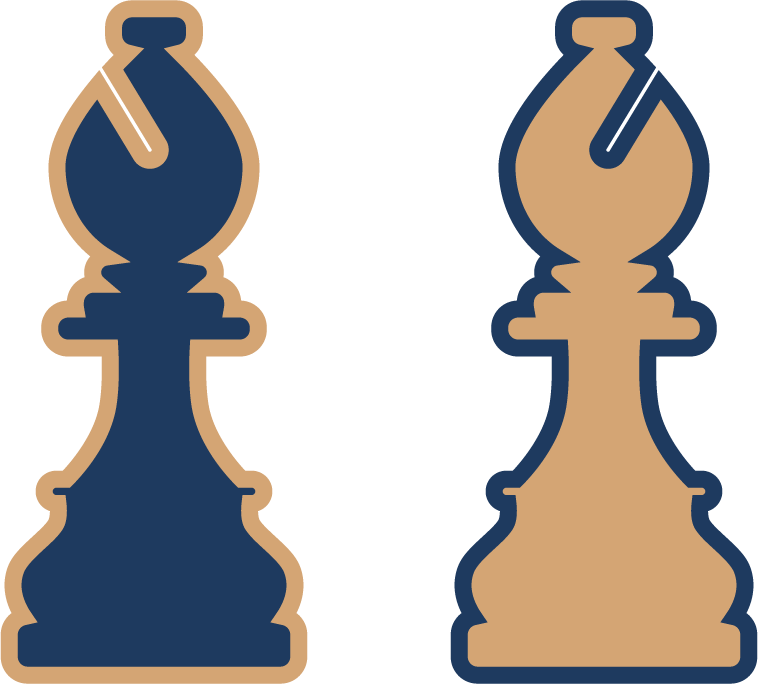Have you ever wondered why working longer hours doesn’t always mean getting more done? The truth is, productivity isn’t about cramming your day with endless tasks. It’s about finding the right balance between effort and rest.
As someone who has written four books and managed teams while maintaining personal relationships, I’ve learned that productivity thrives in short, focused bursts. For me, 3-4 hours of deep work each day yield better results than marathon sessions. This is what I call the “Goldilocks principle” of productivity—not too much, not too little, but just right.
Overworking can lead to burnout and reduce the quality of your output. This is where “productivity curves” come into play. When you push beyond your peak hours, your efficiency drops. For example, 80% of my book *The Subtle Art of Not Giving a F*ck* was completed in the final three months by focusing on quality over quantity.
Productivity is personal. It’s about understanding your rhythms, setting clear goals, and making the most of your time. Let’s explore how you can achieve this balance in your own life.
Key Takeaways
- Productivity is about balance, not long hours.
- Focus on 3-4 peak hours of deep work daily.
- Overworking reduces output quality.
- Understand your personal productivity curves.
- Set clear goals to maximize efficiency.
1. Understanding the Core Principles of Productivity
Why do some people achieve more in less time while others struggle? The answer lies in understanding the core principles that drive efficiency. Productivity isn’t a one-size-fits-all concept. It’s deeply personal and shaped by your unique rhythms, values, and goals.
What Are the Principles of Productivity?
Many people chase productivity “porn”—idealized routines of high achievers like Jeff Bezos or Sheryl Sandberg. While inspiring, these routines often don’t work for everyone. For example, I transitioned from being a night owl to an early riser because it aligned better with my work and personal life. The key is to create a system tailored to your needs.
Why Productivity Is Personal
Your productivity is influenced by your natural rhythms and habits. Some people thrive in the morning, while others hit their stride late at night. Understanding your peak hours can help you maximize your time. It’s not about working harder but working smarter.
The Role of Values in Productivity
Your values act as a compass, guiding your decisions and routines. For instance, if creativity is a core value, schedule your most demanding tasks during your most creative hours. This alignment ensures your work feels meaningful and sustainable.
To stay on track, consider the SMART goals framework. Make your goals Specific, Measurable, Achievable, Relevant, and Time-bound. This approach helps you focus on what truly matters and avoid distractions.
2. Focusing on Quality Over Quantity
Does working more always lead to better results? Many believe that longer hours equal greater success, but this mindset often leads to burnout and rushed outcomes. The key to real progress lies in focusing on quality, not quantity.
The Myth of More Work Equals More Success
A study found that 72% of professionals feel guilty about not working overtime, even when their tasks are complete. This “puritanical work ethic” can be counterproductive. For example, during the writing of *The Subtle Art of Not Giving a F*ck*, 150,000 words were produced in just three months by prioritizing focused, high-quality work over marathon sessions.

How to Optimize Your Productive Hours
Your time is your most valuable resource. To make the most of it, identify your biological prime time—the hours when you’re naturally most alert and focused. Schedule your most demanding tasks during these periods. This approach contrasts with the “Eat That Frog” method, which suggests tackling hard tasks first. Instead, align your work with your energy levels for better results.
The Importance of Productivity Curves
Productivity curves show that efficiency peaks during the first 3-4 hours of deep work. Beyond this, diminishing returns set in. For instance, the author’s writing process saw a significant boost in output during the final three months compared to the initial 15 months. Rushing tasks can lead to “productivity debt,” where rushed work requires revisions, wasting more time in the long run.
3. Eliminating Distractions for Better Focus
What’s the biggest barrier to staying focused in today’s world? The answer is simple: distractions. From social media notifications to endless emails, our attention is constantly pulled in multiple directions. Research shows it takes an average of 23 minutes to recover focus after a single interruption. To boost productivity, it’s essential to identify and eliminate these distractions.
Identifying Nutritious vs. Junk Information
Not all information is created equal. Nutritious information, like books or documentaries, enriches your mind and supports your goals. On the other hand, junk information—clickbait headlines or doomscrolling—wastes your time and energy. Start by curating your content intake. Ask yourself, “Does this add value to my life?” If the answer isn’t a clear “yes,” it’s time to move on.
How to Control Your Attention
Controlling your attention is a skill that requires practice. One effective strategy is the “Fuck Yes or No” rule for social media. Only engage with content that truly excites you. Additionally, tools like Freedom or Cold Turkey can block distracting apps, helping you stay on track. These tools give you the control to focus on what matters most.
Practical Steps to Minimize Distractions
Start by creating a “To-Don’t List.” For example, “No Netflix discussions before noon” or “No checking emails during deep work sessions.” Schedule intentional leisure time, like watching Twitch or Netflix, to avoid guilt and maintain balance. Finally, remember Dr. Gloria Mark’s research: multitasking reduces efficiency. Focus on one task at a time to maximize your output.
4. Effective Time Management Techniques
Ever feel like there’s never enough time in the day to get everything done? The key to tackling this challenge lies in mastering effective time management. By organizing your tasks and setting clear priorities, you can maximize your efficiency and reduce stress.

Prioritization and the Eisenhower Matrix
One of the most powerful tools for time management is the Eisenhower Matrix. This method helps you categorize tasks based on urgency and importance. Unlike the Covey Quadrant, which focuses on roles and goals, the Eisenhower Matrix is simpler and more direct. It divides your tasks into four categories: urgent and important, important but not urgent, urgent but not important, and neither urgent nor important.
For example, responding to a client email might be urgent and important, while planning a long-term project falls into the important but not urgent category. By using this matrix, you can focus on what truly matters and avoid wasting time on low-priority tasks.
The Pomodoro Technique and Time-Blocking
Another popular method for effective time management is the Pomodoro Technique. This involves working in focused intervals, typically 25 minutes, followed by a 5-minute break. Writers often use this method to maintain focus, while creatives might prefer flexible time-boxing to suit their workflow.
Time-blocking is another effective strategy. It involves scheduling specific blocks of time for different tasks or activities. For instance, you might dedicate 6-8 AM for deep work and 10 AM for meetings. This approach ensures that your day is structured and productive.
How to Create a Daily, Weekly, and Monthly Plan
Creating a plan is essential for staying organized. Start by outlining your daily schedule, including time for work, breaks, and personal activities. Tools like Harvest can help track your tasks, manage projects, and even integrate with Slack or GSuite for seamless workflow.
For weekly and monthly plans, focus on broader goals and deadlines. Use the 50/30/20 rule to avoid “schedule sprawl”: dedicate 50% of your time to core tasks, 30% to buffer activities, and 20% to breaks. This balance ensures you stay productive without burning out.
By implementing these time management techniques, you can take control of your schedule and achieve your goals more efficiently.
5. Building Self-Discipline and Good Habits
What separates highly productive individuals from the rest? The answer often lies in their ability to cultivate self-discipline and maintain good habits. These traits are the foundation of sustained progress and efficiency in daily life.
The Importance of Self-Discipline in Productivity
Self-discipline is more than just willpower—it’s about aligning your actions with your identity. Instead of forcing yourself to finish tasks, adopt the mindset, “I am someone who finishes projects.” This shift in perspective makes discipline feel natural rather than forced.
Michael Hyatt’s “Free to Focus” system emphasizes the importance of prioritizing tasks that align with your goals. By focusing on what truly matters, you can avoid distractions and stay on track.
How to Develop and Maintain Good Habits
Building habits starts with small, consistent actions. One effective technique is habit-stacking, where you link a new habit to an existing one. For example, “After my morning coffee, I write 500 words.” This method makes it easier to integrate new behaviors into your daily life.
Another strategy is temptation bundling—pairing a disliked task with a reward. For instance, listen to your favorite podcast while doing household chores. This approach makes even mundane tasks enjoyable and helps maintain consistency.
The Power of Consistent Routines
Routines provide structure and reduce decision fatigue. The author’s daily routine includes a 6 AM wake-up, creative work in the morning, and scheduled gaming sessions in the evening. This balance ensures productivity while allowing time for relaxation.
To stay accountable, consider using habit-tracking apps like Habitica or Streaks. These tools help you monitor your progress and reinforce positive behaviors. Over time, these small changes can lead to significant improvements in your efficiency and overall well-being.
6. Conclusion: Putting the Principles of Productivity into Practice
Mastering productivity starts with actionable steps, not just theory. The four pillars framework—task management, prioritization, time management, and focus—provides a sustainable foundation. Begin by auditing your current systems using the 80/20 rule. Identify the 20% of tasks that yield 80% of your results and focus on them.
Tools like Harvest can help streamline your efforts. Teams using Harvest report 23% fewer overtime hours, making it a valuable asset for tracking and optimizing your plan. Start today by scheduling your first goof-off block to balance work and rest.
Avoid the trap of system-hopping. Master one method before exploring others. Building consistent habits and aligning your priorities with your goals will lead to lasting improvements in your efficiency.
FAQ
What are the core principles of productivity?
The core principles include focusing on quality over quantity, managing time effectively, eliminating distractions, and building self-discipline. These elements help boost efficiency and achieve meaningful progress.
Why is productivity personal?
Productivity is personal because everyone has unique goals, values, and work styles. What works for one person may not work for another, so it’s essential to tailor strategies to fit individual needs.
How can I optimize my productive hours?
Identify your peak energy times, often called productivity curves, and schedule your most important tasks during these periods. Tools like the Pomodoro Technique can also help maintain focus.
What’s the best way to minimize distractions?
Start by identifying sources of distractions, such as social media or unnecessary notifications. Use apps like Focus@Will or Freedom to block distractions and create a focused work environment.
How does the Eisenhower Matrix help with prioritization?
The Eisenhower Matrix divides tasks into four categories: urgent and important, important but not urgent, urgent but not important, and neither. This helps you focus on what truly matters and avoid wasting time on low-priority tasks.
What role do habits play in productivity?
Habits create consistency and reduce the need for constant decision-making. Building routines, like a morning schedule or daily planning, can significantly improve efficiency over time.
How can I manage my time more effectively?
Use techniques like time-blocking to allocate specific periods for tasks. Apps like Todoist or Trello can help you organize your to-do list and track progress throughout the day.
Why is self-discipline important for productivity?
Self-discipline helps you stay focused on your goals, even when faced with distractions or challenges. It’s the foundation for maintaining good habits and achieving long-term success.
